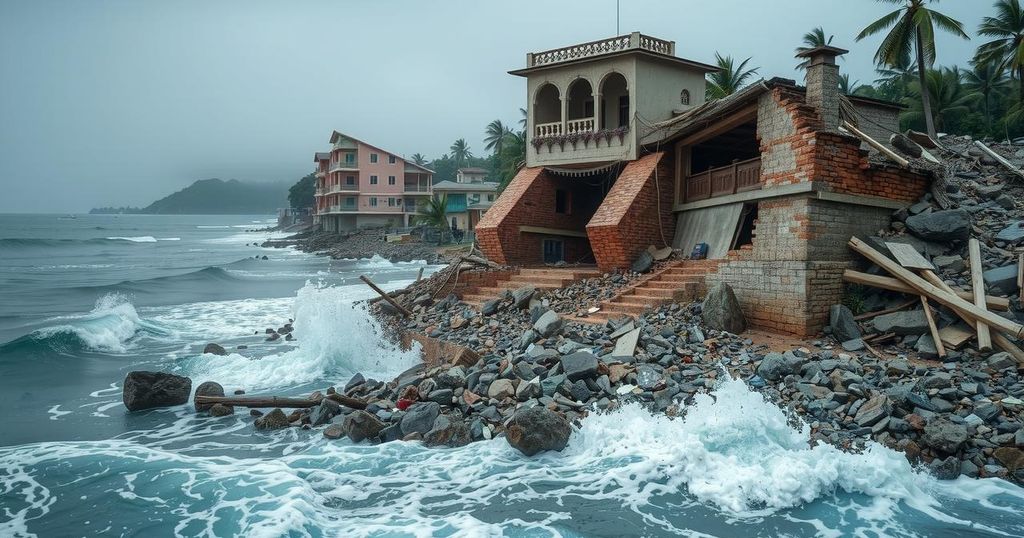Two Decades After the 2004 Tsunami: Haunting Memories and Ongoing Struggles in India
The December 26, 2004 tsunami, triggered by a 9.1 magnitude earthquake, devastated Indian coastal communities, particularly in Tamil Nadu, resulting in over 10,000 fatalities. Survivors recall the chaos and panic that ensued and the enduring impacts on their lives. Commemorative events are planned to honor those lost, while ongoing efforts to rebuild remain insufficient for many affected families.
On December 26, 2004, a devastating 9.1 magnitude earthquake triggered a tsunami that wreaked destruction along the coasts of many countries, including India. Yusuf Ansari, a young boy at the time, vividly recalls the chaos of that day as he played cricket on a beach. “Out of nowhere, we saw a boat tossed by the waves, followed by a massive rush of dark water and a big wave of water. It all happened so fast,” he reported, emphasizing the panic that ensued as people rushed to safety.
The tsunami resulted in approximately 230,000 fatalities across a dozen countries. In India alone, the tragedy claimed the lives of 10,749 individuals, with Tamil Nadu state suffering the most significant losses. As the years passed, the impact of that fateful day remains etched in the memories of survivors, such as Jaya, who narrated the horror she experienced while watching the waves engulf her village and the uncertainty surrounding her husband’s fate, who was fishing at sea.
In remembrance of the calamity, local fishery organizations plan to hold a commemorative event next week, featuring a moment of silence and offerings to pay tribute to those lost. Efforts to rebuild have been ongoing, with the Tamil Nadu state government collaborating with international agencies to restore infrastructure and housing. However, one fisherman, Kuppi Ratnam, expressed the shortcomings of these measures, stating, “While many families were provided government-built houses, it wasn’t a solution for everyone. Some couldn’t afford to rebuild,” reflecting the lingering struggles faced by those affected after two decades.
Ultimately, the scars of the earthquake and tsunami continue to haunt the Indian populace, marking not only a geographical change but also a profound emotional toll that is felt to this day.
The tsunami of December 26, 2004, resulted from a massive undersea earthquake near Sumatra, Indonesia, prompting immense waves that devastated coastal regions as far as East Africa. With over 230,000 lives lost and entire communities uprooted, the event remains one of the deadliest natural disasters in recorded history. India, particularly Tamil Nadu, was among the hardest-hit states, prompting significant relief efforts and infrastructural rebuilding. The collective memory of this tragedy continues to affect survivors as they navigate their lives twenty years later.
Reflecting on the events of December 2004, it is evident that the tsunami not only caused immediate destruction but also left lasting scars on the survivors and their communities. Efforts to commemorate those lost and to address the needs of the affected continue to be crucial in the healing process, highlighting the resilience and spirit of the communities in the aftermath of one of the most catastrophic events in history.
Original Source: www.mymotherlode.com




Post Comment